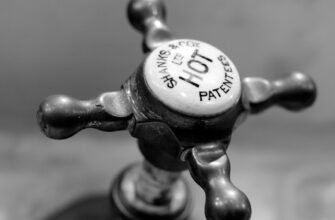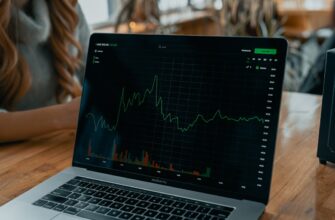- The Rising Threat to Your Financial Security
- How Hackers Target Your Funds
- Top 10 Best Practices to Protect Your Funds
- 1. Enable Multi-Factor Authentication (MFA)
- 2. Use Password Managers & Unique Credentials
- 3. Freeze Credit & Set Transaction Alerts
- 4. Isolate Financial Devices & Networks
- 5. Verify Communications Rigorously
- 6. Update Systems & Use Antivirus Software
- 7. Secure Cryptocurrency with Cold Wallets
- 8. Monitor Accounts Weekly
- 9. Limit Linked Accounts & Permissions
- 10. Educate Yourself Continuously
- FAQs: Protecting Funds from Hackers
- What’s the single most effective protection for my money?
- Should I use debit or credit cards online?
- How often should I change passwords?
- Are biometric logins (fingerprint/face ID) safe?
- What should I do if hacked?
- Final Security Reinforcement
The Rising Threat to Your Financial Security
As digital finance grows, so do sophisticated hacking attempts targeting personal and business funds. Cybercriminals deploy phishing scams, malware, and social engineering to drain accounts, with losses exceeding $6.9 billion in 2021 alone according to FBI reports. Protecting your funds from hackers isn’t optional—it’s critical financial self-defense. This guide outlines actionable best practices to shield your money from evolving cyber threats.
How Hackers Target Your Funds
Understanding hacker tactics is your first line of defense. Common methods include:
- Phishing attacks: Fake emails/texts mimicking banks to steal login credentials
- Malware: Keyloggers capturing keystrokes or ransomware encrypting files
- SIM swapping: Hijacking phone numbers to bypass 2FA
- Public Wi-Fi snooping: Intercepting data on unsecured networks
- Credential stuffing: Using leaked passwords across multiple accounts
Top 10 Best Practices to Protect Your Funds
1. Enable Multi-Factor Authentication (MFA)
Require at least two verification methods for financial accounts—typically a password plus a biometric scan, authenticator app code, or physical security key. Avoid SMS-based 2FA when possible due to SIM swap risks.
2. Use Password Managers & Unique Credentials
Generate 12+ character passwords with symbols, numbers, and mixed cases for every account. Password managers like Bitwarden or 1Password encrypt and auto-fill credentials, eliminating reuse vulnerabilities.
3. Freeze Credit & Set Transaction Alerts
Contact Equifax, Experian, and TransUnion to freeze credit reports, blocking unauthorized loans. Enable real-time SMS/email alerts for all account transactions exceeding $0 to detect breaches instantly.
4. Isolate Financial Devices & Networks
Dedicate one device exclusively for banking/crypto transactions. Never use public Wi-Fi for finances—employ VPNs with AES-256 encryption like ProtonVPN for secure connections.
5. Verify Communications Rigorously
Banks never call/email requesting passwords. Confirm contact legitimacy by calling official numbers from their website. Hover over links to check URLs before clicking.
6. Update Systems & Use Antivirus Software
Install patches immediately for OS, browsers, and apps to fix security flaws. Use reputable antivirus suites like Bitdefender that include ransomware protection and firewall controls.
7. Secure Cryptocurrency with Cold Wallets
Store crypto assets offline in hardware wallets (e.g., Ledger, Trezor). Enable whitelisting for withdrawal addresses and use multi-sig wallets requiring multiple approvals for transactions.
8. Monitor Accounts Weekly
Review all financial statements weekly for unrecognized transactions. Use credit monitoring services like Credit Karma for dark web scans of your information.
9. Limit Linked Accounts & Permissions
Disconnect unused apps from bank/PayPal accounts. Revoke “read/write” permissions for financial apps, allowing only necessary access.
10. Educate Yourself Continuously
Subscribe to CISA alerts and follow cybersecurity blogs. Conduct annual security audits of financial practices. Teach family members to recognize scams.
FAQs: Protecting Funds from Hackers
What’s the single most effective protection for my money?
Multi-factor authentication (MFA) blocks 99.9% of automated attacks according to Microsoft. Pair it with unique passwords for maximum security.
Should I use debit or credit cards online?
Credit cards offer stronger fraud protection and don’t provide direct access to your bank balance. Use virtual card numbers for online purchases when possible.
How often should I change passwords?
Change passwords immediately after a breach notification. Otherwise, update high-value financial passwords every 3-6 months. Regular changes are less critical if using strong, unique passwords managed securely.
Are biometric logins (fingerprint/face ID) safe?
Biometrics add robust security when paired with device encryption. However, always have a backup MFA method in case of biometric failure or compromise.
What should I do if hacked?
Immediately: 1) Contact financial institutions to freeze accounts 2) Change all passwords 3) Report to authorities (FTC, local police) 4) Place credit freezes 5) Scan devices for malware.
Final Security Reinforcement
Protecting funds from hackers demands ongoing vigilance. Implement these best practices consistently—security isn’t a one-time task but a continuous process. Start today by enabling MFA on your most critical accounts, and remember: Your proactive measures are the strongest firewall against financial loss.








